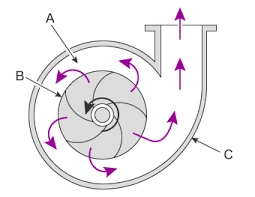Mobile:+86-311-808-126-83
Email:info@ydcastings.com
what is diecasting
Understanding Die Casting A Comprehensive Overview
Die casting is a manufacturing process that has been instrumental in producing high-quality metal parts and components for various industries. This technique involves forcing molten metal into a mold cavity under high pressure, resulting in precise and complex shapes that are integral in sectors like automotive, aerospace, electronics, and consumer goods. In this article, we will delve into the fundamentals of die casting, its advantages, applications, and considerations for manufacturers.
The Die Casting Process
At its core, die casting is an efficient way of creating metallic parts through a series of well-defined steps. The process typically begins with the preparation of the die, which is made from a durable material such as steel that is engineered to withstand the high pressures and temperatures associated with molten metal. The two common types of die casting are hot chamber and cold chamber processes.
- Hot Chamber Die Casting In this method, the melting pot is integrated with the die casting machine. The molten metal is drawn into the injector chamber directly from the furnace. This technique is primarily used for metals with low melting points, such as zinc and magnesium. - Cold Chamber Die Casting This method is suitable for metals with higher melting points, like aluminum and brass. Here, the molten metal is poured into a separate chamber before being injected into the die, making it necessary to preheat the die to maintain optimal temperatures during the process.
Once the molten metal is injected into the die, it cools and solidifies rapidly, creating the desired shape. After the cooling period, the die opens, and the finished part is ejected. This entire process can be completed in a matter of seconds, making die casting an efficient solution for mass production.
Advantages of Die Casting
Die casting offers numerous advantages that make it a preferred choice for manufacturers
1. High Precision and Accuracy Die casting produces parts that have tight tolerances and intricate details, making it suitable for components that require exact specifications.
what is diecasting

3. Strength and Durability The solidification process lends strength to the cast parts, making them highly durable and capable of withstanding substantial stress and temperature fluctuations.
4. Economical for Large Volumes While the initial setup cost for die casting can be high, it becomes cost-effective when producing large volumes of parts, as the per-unit cost decreases significantly.
Applications of Die Casting
Die casting is widely used across various industries due to its versatility and efficiency. Some common applications include
- Automotive Components Parts such as engine blocks, transmission cases, and structural components benefit significantly from die casting, given the high strength-to-weight ratio of the derived parts.
- Electronics Components like housings for electronic devices and connectors often utilize die casting for their intricate designs and robustness.
- Consumer Products Items such as kitchen utensils, office equipment, and decorative home accessories leverage the aesthetic and functional benefits of die casting.
Considerations for Manufacturers
While die casting offers numerous benefits, there are important considerations that manufacturers must keep in mind. The initial investment in dies and machinery can be substantial, requiring careful planning and budgeting. The choice of material is also crucial, as different metals and alloys can affect the properties of the finished product. Additionally, the design of the component must take into account factors such as draft angles and wall thickness to ensure successful casting and easy ejection from the die.
In conclusion, die casting is a powerful manufacturing process that provides precision, strength, and efficiency, making it an ideal choice for producing high-quality metal components in various industries. By understanding its workings, advantages, and best practices, manufacturers can optimize their production processes and deliver superior products for their customers.
-
Why Should You Invest in Superior Pump Castings for Your Equipment?NewsJun.09,2025
-
Unlock Performance Potential with Stainless Impellers and Aluminum End CapsNewsJun.09,2025
-
Revolutionize Your Machinery with Superior Cast Iron and Aluminum ComponentsNewsJun.09,2025
-
Revolutionize Fluid Dynamics with Premium Pump ComponentsNewsJun.09,2025
-
Optimizing Industrial Systems with Essential Valve ComponentsNewsJun.09,2025
-
Elevate Grid Efficiency with High-Precision Power CastingsNewsJun.09,2025











